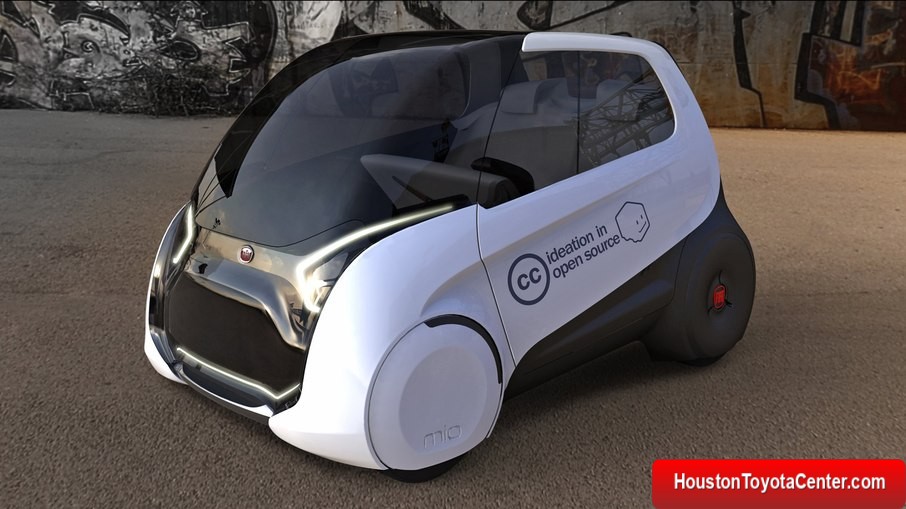In 2010, during the São Paulo Auto Show, Fiat surprised the world with a concept car unlike any other — the Fiat Mio. Rather than presenting a traditional prototype conceived by a closed team of engineers and designers, Fiat did something revolutionary: it invited the public to help design it.
More than 17,000 participants from 160 countries contributed ideas through an online collaborative platform. This open-source initiative aimed to explore what the “car of the future” should look like — long before open innovation became a buzzword.
The project, developed at the Fiat Stile Center in Betim, Brazil, united engineers, designers, and innovation experts. Yet its foundation came from everyday people — car lovers, technologists, and visionaries — who helped shape each detail through transparent online discussions.
💡 The Concept of Open Co-Creation
Fiat’s proposal was bold yet simple: understand how the public envisioned the mobility of the future. Through an interactive platform operating under a Creative Commons license, users could freely exchange ideas, suggest changes, and even reuse content.
FREE: Quickly identify and understand problems with your vehicle 🚘
CLICK HEREAt the time, this level of openness was radical for the auto industry. Fiat essentially democratized design.
| Key Facts About the Fiat Mio Project | Details |
|---|---|
| Year of Presentation | 2010 |
| Location | São Paulo Auto Show, Brazil |
| Participants | 17,000+ from 160 countries |
| Ideas Submitted | Nearly 12,000 |
| Development Center | Fiat Stile Center (Betim, MG) |
| License | Creative Commons |
| Core Themes | Design, technology, sustainability, connectivity |
⚙️ What the Public Imagined
The participants’ suggestions reflected a futuristic mindset that anticipated today’s automotive trends.
Top community requests included:
- Integration between car and smartphone (years before Android Auto or Apple CarPlay) 📱
- Touchscreen controls and digital dashboards
- Use of sustainable and recyclable materials 🌱
- Remote monitoring and data-driven connectivity
- A lightweight electric platform with independent motors
Fiat’s design team turned these thousands of ideas into a sleek, minimalist vehicle featuring:
- Carbon fiber bodywork
- Four independent electric motors
- LED headlight technology
- A cabin focused on comfort and eco-efficiency
🔋 Innovation That Shaped the Future
Even though the Fiat Mio never reached production lines, it became a laboratory of innovation. Many of its ideas later inspired actual technologies in Fiat’s lineup.
For example, the LED lighting signature and geometric front-end design that debuted on the Mio influenced the look of the Fiat Toro (2016) and other modern models.
Its philosophy also resonated with broader industry movements — sustainability, digital integration, and consumer collaboration.
“It was a milestone in the history of Fiat and the automotive industry,” said Peter Fassbender, now Vice President of Design at Stellantis South America.
“The project anticipated discussions about design, connectivity, sustainability, and new forms of mobility.”
🌐 A Cultural Shift in the Industry
The Fiat Mio wasn’t just a car — it was a symbol of participatory innovation. It proved that consumers could play a meaningful role in shaping products, especially when technology enabled collective dialogue.
This mindset later influenced how carmakers approached user feedback, from connected infotainment systems to personalized digital experiences.
| Fiat Mio’s Legacy | Impact on the Industry |
|---|---|
| Open collaboration | Inspired future co-creation projects |
| Sustainability focus | Paved the way for eco-friendly material testing |
| Digital foresight | Predicted integration of smart devices in vehicles |
| Design influence | Echoed in later Fiat models, like Toro |
| Consumer inclusion | Redefined relationship between brand and user |
🕰️ Fifteen Years Later
Today, the Fiat Mio remains preserved in the brand’s historical collection — a reminder that innovation doesn’t always come from corporate labs.
Fifteen years on, it’s not the car’s horsepower or speed that keeps it relevant, but its message:
The future is not built in isolation — it’s co-created with those who will live it.
🌟 Final Thoughts
The Fiat Mio remains one of the world’s first truly collaborative car design experiments. It showed that listening to people — not just marketing to them — can lead to powerful innovation.
In many ways, the Mio was a conversation on wheels.
And that conversation still drives the auto industry forward today.


Leave a Reply